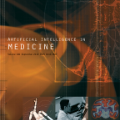The utilization of pre-trained networks, especially those trained on ImageNet, has become a common practice in Computer Vision. However, prior research has indicated that a significant number of images in the ImageNet dataset contain watermarks, making pre-trained networks susceptible to learning artifacts such as watermark patterns within their latent spaces. In this paper, we aim to assess the extent to which popular pre-trained architectures display such behavior and to determine which classes are most affected. Additionally, we examine the impact of watermarks on the extracted features. Contrary to the popular belief that the Chinese logographic watermarks impact the "carton" class only, our analysis reveals that a variety of ImageNet classes, such as "monitor", "broom", "apron" and "safe" rely on spurious correlations. Finally, we propose a simple approach to mitigate this issue in fine-tuned networks by ignoring the encodings from the feature-extractor layer of ImageNet pre-trained networks that are most susceptible to watermark imprints.
翻译:然而,先前的研究显示,图像网数据集中有大量图像含有水印,使经过预先训练的网络易于在其潜在空间内学习诸如水印图案等文物。在本文中,我们的目的是评估广受欢迎的预先训练的建筑显示这种行为的程度,并确定哪些类别受影响最大。此外,我们研究了水印对提取的特征的影响。与人们所认为的中国对“卡通”类的影响相反,我们的分析表明,各种图像网类,如“监测器”、“扫荡器”、“快速”和“安全”依赖虚假的关联。最后,我们提出一种简单的方法,通过忽略最易受水印影响的图像网预先训练的网络的特征提取层的编码,在经过精密调整的网络中减轻这一问题。</s>




